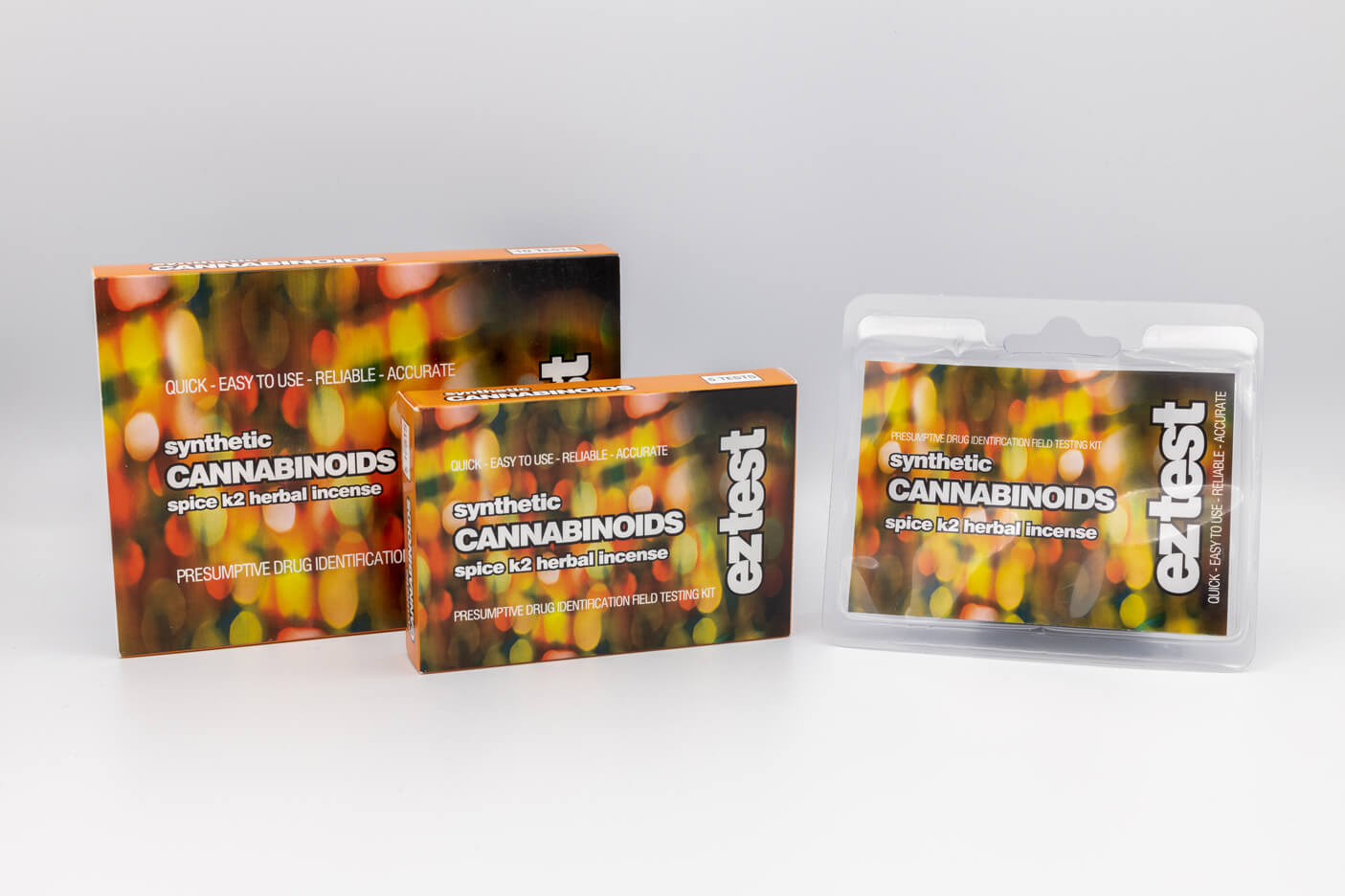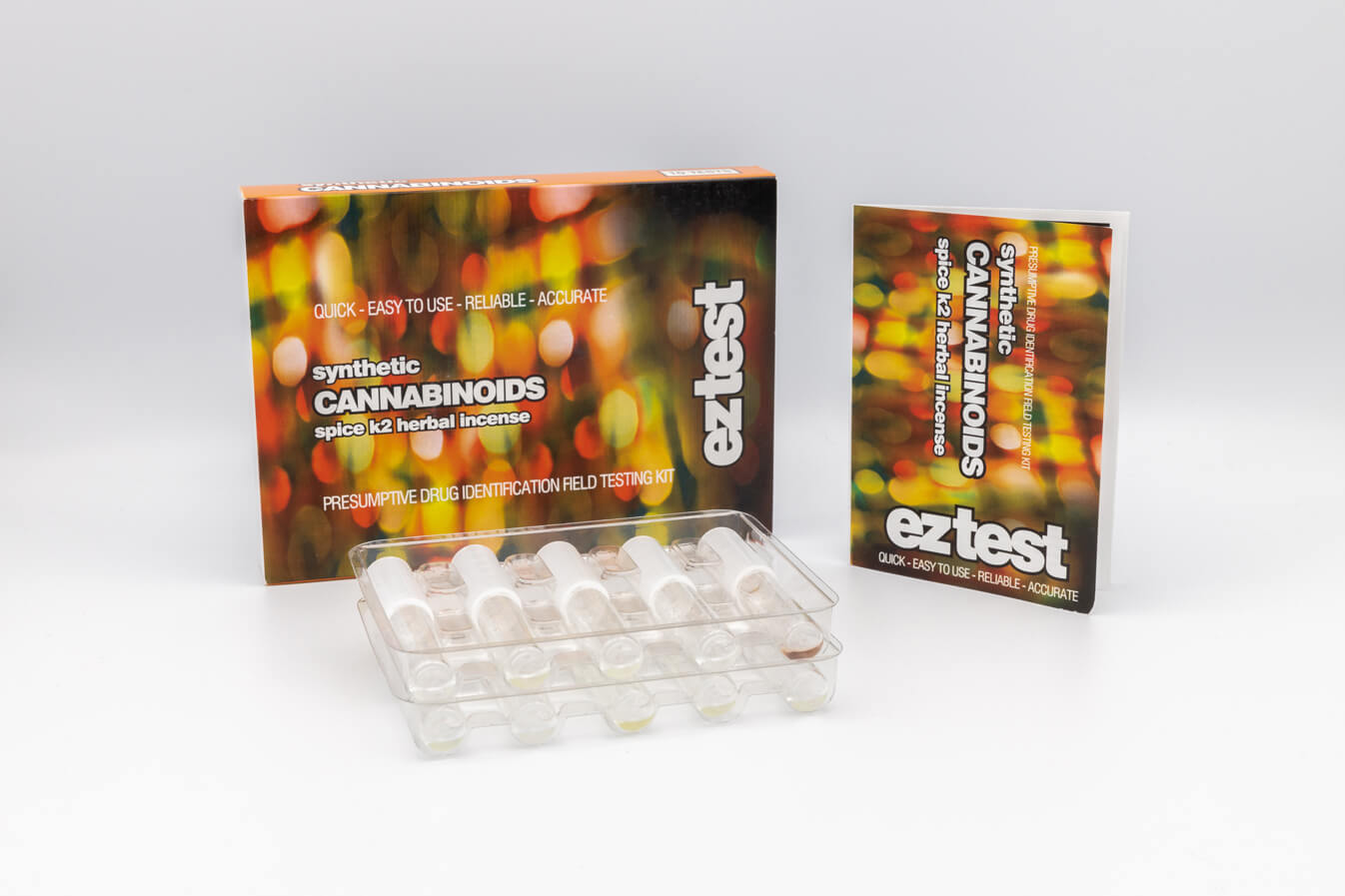EZ Test Kits
Drogentestkit für synthetische Cannabinoide
Drogentestkit für synthetische Cannabinoide
Verfügbarkeit für Abholungen konnte nicht geladen werden
- Sicheres Einkaufen
- Diskreter Versand
- Sichere Zahlungen
 Erkennt synthetische Cannabinoide : Identifiziert verschiedene synthetische Cannabinoide, darunter beliebte Substanzen wie Spice und K2. (JWH)
Erkennt synthetische Cannabinoide : Identifiziert verschiedene synthetische Cannabinoide, darunter beliebte Substanzen wie Spice und K2. (JWH)
 Einfach und schnell : Erhalten Sie in wenigen Minuten Ergebnisse; eine deutliche Farbänderung zeigt das Vorhandensein bestimmter Cannabinoide an.
Einfach und schnell : Erhalten Sie in wenigen Minuten Ergebnisse; eine deutliche Farbänderung zeigt das Vorhandensein bestimmter Cannabinoide an.
 Testen zu Hause: Mit den EZ-Testkits können Sie Substanzen in der Sicherheit Ihres eigenen Zuhauses testen.
Testen zu Hause: Mit den EZ-Testkits können Sie Substanzen in der Sicherheit Ihres eigenen Zuhauses testen.
Das Drogentestkit für synthetische Cannabinoide ist eine spezielle Ergänzung der EZ Test-Reihe und wurde zum Nachweis einer Vielzahl synthetischer Cannabinoide entwickelt , darunter Substanzen wie Spice , K2 und die darin enthaltenen Verbindungen wie JWH-018. Mit diesem benutzerfreundlichen Kit können Benutzer das Vorhandensein synthetischer Cannabinoide in einer Probe durch eine einfache Farbänderungsreaktion schnell feststellen .
Was erkennt der Test auf synthetische Cannabinoide?
Was erkennt der Test auf synthetische Cannabinoide?
Dieses Kit dient zum Nachweis einer Reihe synthetischer Cannabinoide, darunter:
- Spice und K2 (Marken-/Produktnamen)
- JWH-250, JWH-200, JWH-018/073/081
- CP-55/940, CP-47/497
- AM-694
Durch Vergleichen der Farbänderung im Reagenz mit der bereitgestellten Tabelle können Benutzer schnell feststellen, ob diese Substanzen in der Probe vorhanden sind.
Wie es funktioniert
Wie es funktioniert
Das Drogentestkit für synthetische Cannabinoide verwendet ein chemisches Reagenz, das in Kieselgel absorbiert ist, das sich in einer Glasampulle befindet. Wenn eine Probe hinzugefügt wird, reagiert das Reagenz mit den synthetischen Cannabinoiden und verursacht eine Farbänderung. Diese Farbe wird dann mit der bereitgestellten Tabelle verglichen und gibt einen klaren Hinweis darauf, welche Substanzen in der Probe vorhanden sein könnten.
Reagent Testing
Reagent Testing
What is Reagent Testing?
Reagents are chemicals (usually acids or bases) which react in a known way to the suspected contents of a sample. All reagents sold by EZ Tests are known to change colour according to the substance that they are testing for.
Reagent testing is the process of adding an unknown material to a chemical reagent to observe the reaction that follows. It is a form of forensic chemistry which aims to rule in and out certain chemicals or groups of chemicals with various reagents until the contents is known. Reagent testing does not guarantee the presence of any particular drug or the absence of any others.
Why is Reagent Testing Important?
Illicit drugs are made, sold and (often) consumed with no quality testing or indication of what they really contain. Unfortunately, this can result in bad experiences, anxiety and serious harm. Reagent tests offer a quick and easy way to get some idea of what you may be taking.
They are not perfect, and they do not replace professional laboratory testing services, but they can be vital and may save a life.
What are the Limitations of Reagent Testing?
Reagent testing cannot guarantee that a sample contains a certain drug, and it cannot guarantee that there is no other drug present. Despite testing, it is possible that a different chemical reacted similarly to the expected reaction, causing a false positive. It is also possible that there is a drug in your sample which does not react to the reagent in question, or the second reaction is obscured by the drug you expect to find, and therefore is not found in the tests. It is always a good idea to use three or more different tests on any sample, to reduce the risk of this happening.
If you are using a purity test then it is vital that you are testing a known quantity of the drug (and that this amount is the same as the amount specified in the instructions) or else the degree of colour change will not correspond to the purity of the sample.
Storage
Storage
The ampoule in which the reagents are supplied is made out of clear glass to allow reliable identification of colour changes. To ensure that the shelf life of your reagents is as long as possible, please store them in a cool, dark place such as your fridge or cool cupboard.
Safe Disposal
Safe Disposal
After testing, please ensure that the ampoule and any leftover sample are disposed of safely to prevent contamination or harm. Proper disposal helps protect yourself and others from potential exposure to harmful substances.
If the reagent comes into contact with your skin, you should wash the affected area with soap and lukewarm water for 10-15 minutes. If the reagent comes into contact with your eyes you should adhere to the same process with lukewarm water only.
Aktie
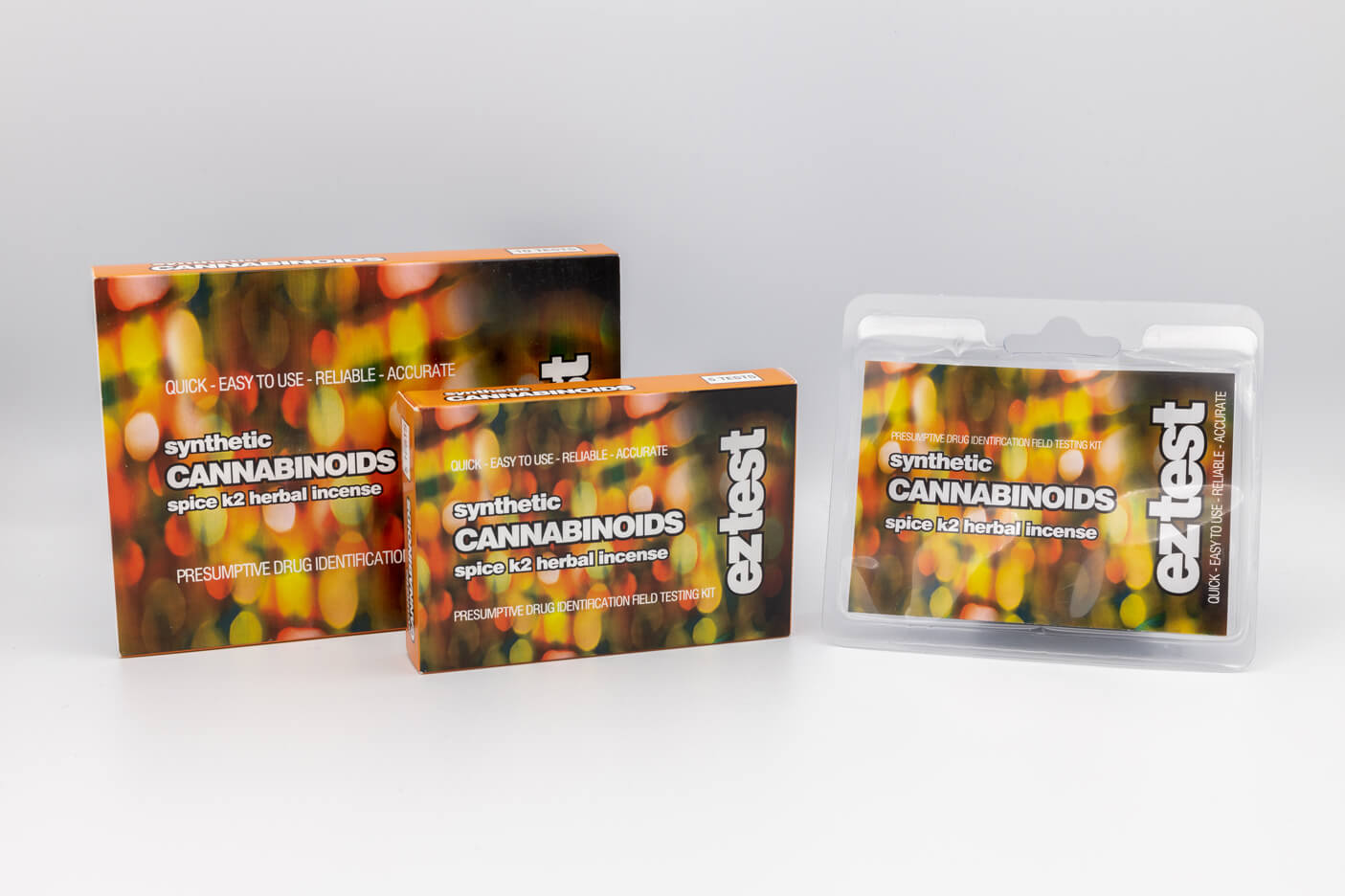
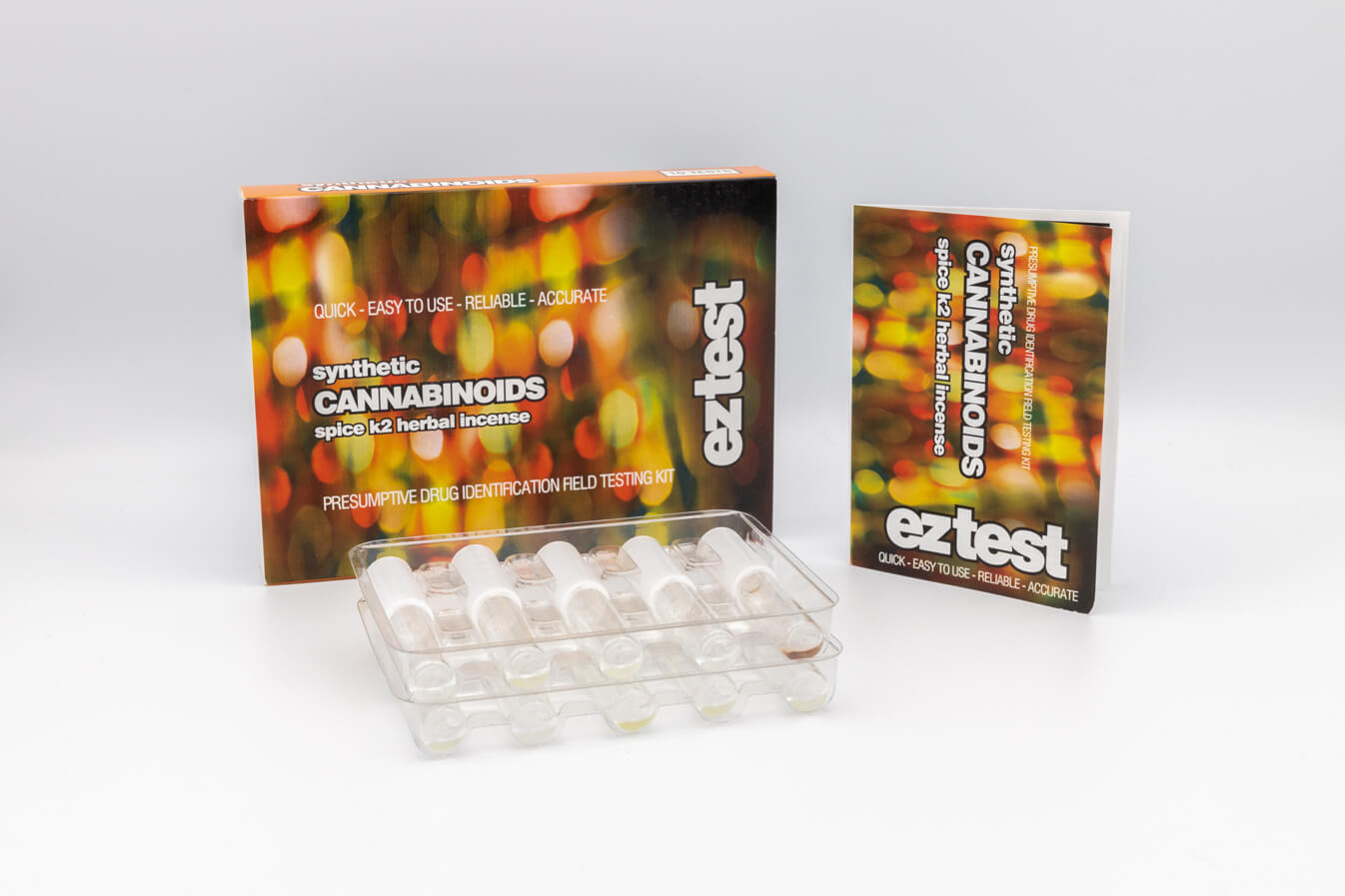
-
WICHTIGER HINWEIS!
- EZ-Testkits liefern keine Informationen darüber, wie viel einer Substanz nachgewiesen wurde und was dementsprechend eine sichere Dosis darstellt.
- Ein positives Ergebnis für das Vorhandensein einer Droge bedeutet nicht, dass keine anderen (potenziell gefährlicheren) Substanzen vorhanden sind.
- Es besteht die Möglichkeit technischer oder verfahrenstechnischer Fehler.
- Andere Faktoren und Substanzen können zu falschen Ergebnissen führen (entweder falsch negativ oder falsch positiv).
- Ein negatives Ergebnis schließt das Vorhandensein von Drogen nicht aus. Es können geringere Mengen vorhanden sein als die getestete.
- Wenn Sie sich über Ihre Ergebnisse nicht im Klaren sind und eine vollständige Analyse der Substanz wünschen, die Sie haben, lesen Sie bitte unseren Artikel zu Labortests .
- Ein positives oder negatives Testergebnis ist KEIN Hinweis darauf, dass die untersuchte Substanz unbedenklich ist. Kein Medikament ist völlig unbedenklich, auch wenn es rein ist.
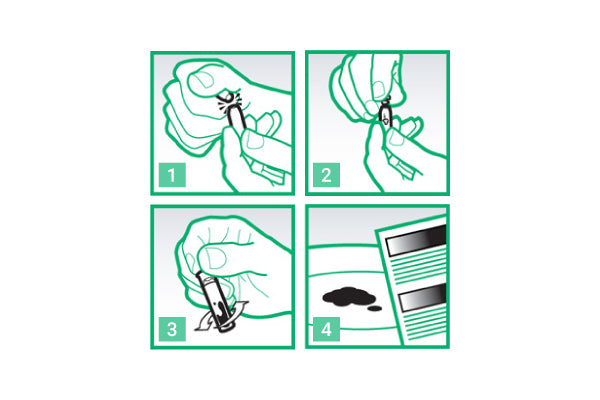
Anweisungen
- Öffnen der Ampulle : Öffnen Sie vorsichtig die im Set enthaltene Glasampulle.
- Probe einfüllen : Geben Sie eine kleine Menge der zu testenden Substanz in die Ampulle.
- Mischen Sie die Chemikalien : Befestigen Sie den Plastikdeckel auf der Ampulle und schütteln Sie sie gut, um sicherzustellen, dass die Probe mit dem Reagenz reagiert.
- Vergleichen Sie die Farbänderung : Beobachten Sie jede Farbänderung in der Lösung und vergleichen Sie sie mit der entsprechenden Farbe in der Tabelle, um das Vorhandensein synthetischer Cannabinoide festzustellen.
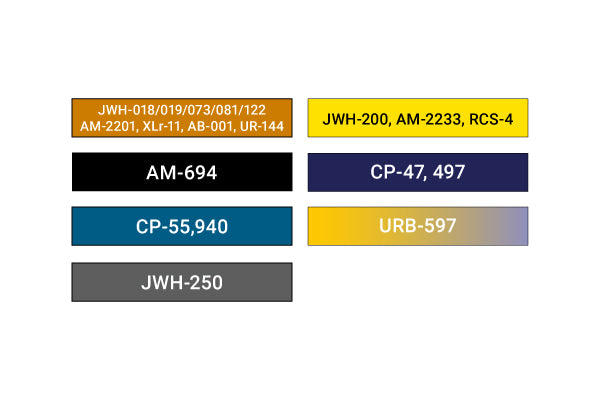
Interpretation der Ergebnisse
- Synthetische Cannabinoide (z. B. Spice-, K2-, JWH-Verbindungen) : Es entwickelt sich eine deutliche Farbe, die den in der Farbkarte aufgeführten spezifischen Cannabinoiden entspricht.
- Keine signifikante Farbänderung : Wenn keine Farbänderung auftritt, enthält die Probe wahrscheinlich keine nachweisbaren synthetischen Cannabinoide.
Useful Links
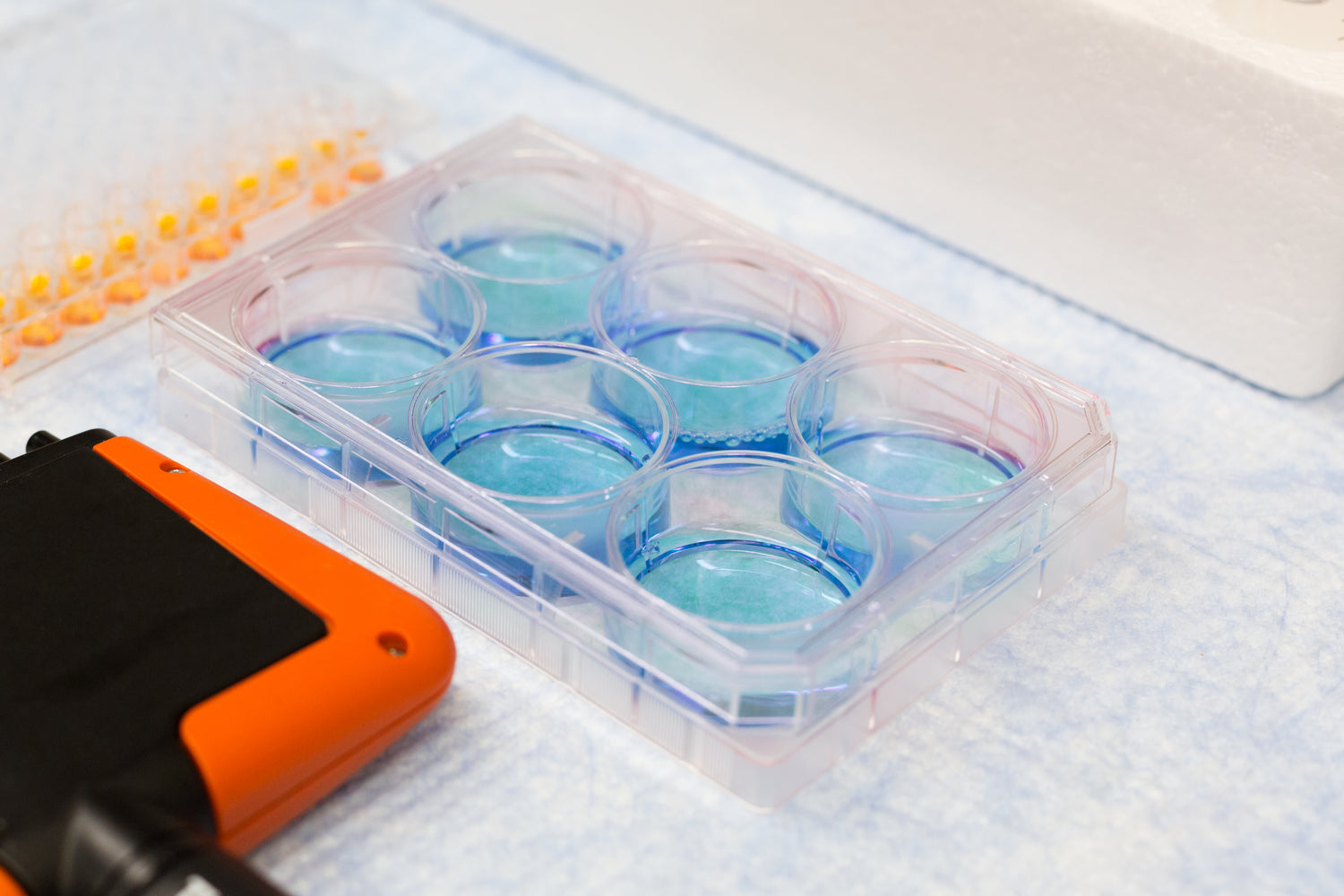
drug science reagent testing information
Any type of recreational drug use carries a degree of risk, both long-term and short-term. This is true for legal recreational...

detailed review of synthetic cannabinoids
Synthetic cannabinoids (SC) are a heterogeneous group of compounds developed to probe the endogenous cannabinoid system or as potential therapeutics...

